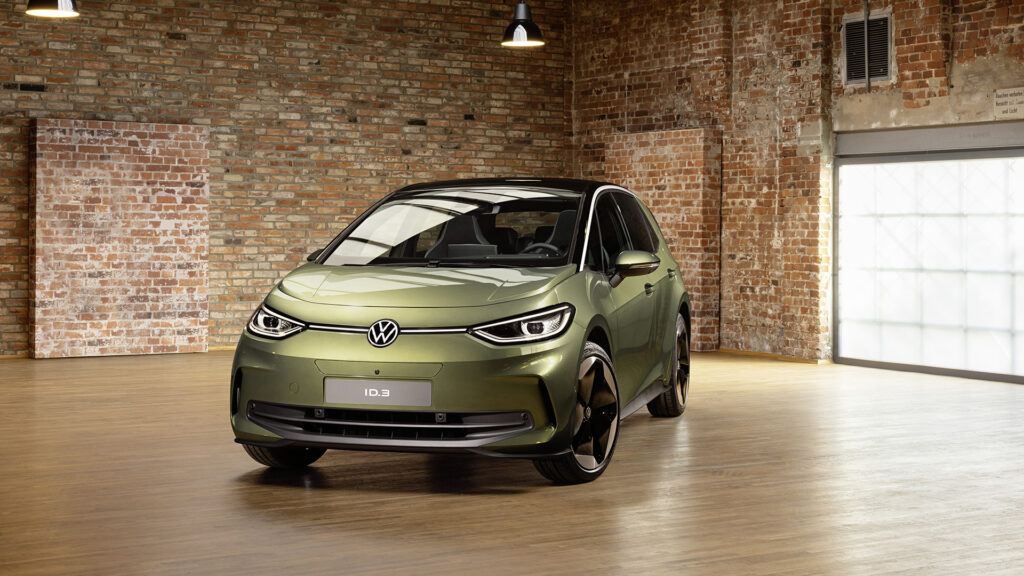German automotive giant Volkswagen has announced its all-electric bestselling ID.3 will be coming to the market with a comprehensive upgrade. The automaker said the facelift has incorporated customer feedback in implementing a sharpened exterior design, improved material quality in the interior and the latest-generation convenience and assist systems which will take the strain out of everyday driving.
The second-generation of the ID.3 – which is coming two-and-half years after its predecessor’s launch – is one of ten electric models that VW will launch by 2026, the automaker said.
The exterior features optimised air-cooling openings and the bonnet now appears longer because the black strip under the windscreen has been removed and recessed sections at the sides additionally extend the front. VW has optimised the aerodynamics by improving air flow around the front wheels – known as the “air curtain”. At the rear, the two-part tail lights also shine in the rear lid for the first time.
The interior of the new ID.3 combines modern design and sustainable materials. VW uses the microfibre material Artvelours Eco for the door trims and seat covers, a fabric that contains 71% recyclate. This is a secondary raw material that is obtained by recycling plastic that has previously been disposed of as waste at least once. Artvelours Eco has the same characteristics in terms of look and feel and durability as conventional new materials. Customer suggestions were acceded to as Volkswagen incorporated soft, foam- backed surfaces in the cockpit.
The Volkswagen product range now comprises six ID. models. In addition to production in Germany’s Zwickau and Dresden, the new ID.3 will also be built in the parent plant in Wolfsburg from autumn 2023.
When it comes to charging the EV, especially on longer journeys, the Electric Vehicle Route Planner will calculate charging stops so that the destination can be reached as quickly as possible – using current traffic information and forecasts in addition to the battery charge level. The charging stops are evaluated dynamically on the basis of the capacity of the individual charging stations. This means that the route planning function may suggest two short charging operations with high power instead of a single long charging stop with low power. In addition, the system detects charging stations that are occupied – and does not suggest them in the first place. Points of interest can be transferred to the car using the free We Connect ID. app.
An optional Travel Assist with ‘swarm data’ will be now available in the hatchback. In combination with the adaptive cruise control (ACC) for longitudinal vehicle control from 0 km/h up to the top speed and lane assist for lateral control, this driver assist system can make use of two proven systems that are fully integrated with one another in the new ID.3. If swarm data is available, Travel Assist will need just one identified road lane marking to keep the vehicle in lane when driving on country roads.
